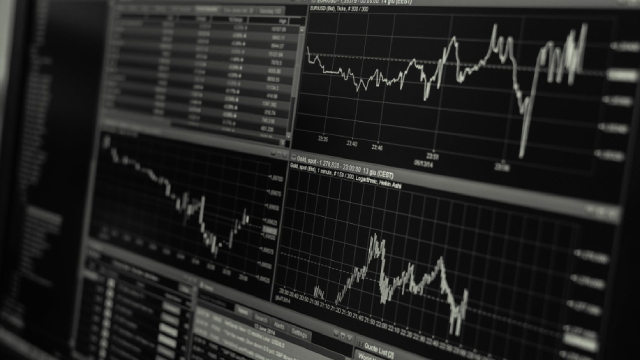Topline
As extensive carnage rears across financial markets posed by President Donald Trump’s tariffs, which went into effect earlier Wednesday, he recommended investors keep calm even as the leading barometer of U.S. stock performance teetered toward a bear market.
“There’s no sign yet that the market is managing to successfully find a bottom,” said one … More
Key Facts
The S&P 500, which follows 500 of the largest public American companies across industries, declined 0.5% to 4,960 at market open Wednesday, before reversing to a 0.1% increase by 9:45 a.m. EDT as the president made his most direct comments yet on the market mayhem; the S&P is still trading 19% below its Feb. 19 record close of 6,144,
“BE COOL! Everything is going to work out well,” Trump posted to his Truth Social site shortly after market open, adding “THIS IS A GREAT TIME TO BUY!”
Trump has still showed no sign he’d reverse course on the tariffs, encouraging companies to simply move all operations to the U.S. in a morning social media post, and China dug in further in its resistance to Trump’s more than 100% tariffs on Chinese imports, slapping an 84% levy on U.S. imports to the Asian country.
The nearly 20% contraction came in less than two months, but most of the damage has actually come over the last week, as the S&P is down 12% from last Wednesday’s close, when Trump announced the hawkish country-by-country tariffs.
Tariffs have similarly routed the other most cited measures of the American stock market, as the 30-company Dow Jones Industrial Average is down 17% from its December peak and the tech-concentrated Nasdaq is down 24% from its December apex.
The Dow fell 0.3%, or 130 points, while the Nasdaq rose 0.8% Wednesday morning.
Crucial Quote
“There’s no sign yet that the market is managing to successfully find a bottom, and it feels like no asset class has been spared as investors continue to price in a growing probability of a US recession,” Deutsche Bank strategist Henry Allen wrote in a Wednesday note to clients.
What’s Happening In The Bond Market?
After strengthening immediately after Trump’s announcement last week as investors fled stocks for assets perceived to be safer, U.S. government bonds have joined in on the selloff. Yields for the benchmark 10-year U.S. Treasury note have shot up more than 40 basis points since Monday to more than 4.4%, reversing the initially lower yields celebrated by Trump and Treasury Secretary Scott Bessent as a sign of cheaper borrowing costs to come. It’s a “perfect storm of bad news” for U.S. bonds, remarked Lawrence Gillum, LPL Financial’s chief fixed income strategist. “Sticky inflation, a patient Fed, potential foreign buyer boycotts, hedge fund deleveraging, rebalancing out of bonds into cash, and an illiquid Treasury market are all reasons why Treasury yields continue to move higher,” Gillum explained. Higher yields mean less valuable bonds, as fixed income investors demand higher annual payouts to hold onto federal government debt.
Jpmorgan Boss Jamie Dimon Warns Of Recession
A recession is the most “likely outcome” for the U.S., JPMorgan Chase CEO Jamie Dimon said in a Wednesday interview with Fox Business. “Markets aren’t always right, but sometimes they’re right,” Dimon remarked about the pain seen across asset classes in recent days. “And I think this time they’re right because they’re pricing uncertainty at the macro level, uncertainty at the micro level, at the actual company level, and then how it affects consumer sentiment,” Dimon continued.
Gold Prices Go Up, Oil Prices Go Down
Commodity markets’ Wednesday trading was dominated by anxiety about the global economy, as prices for the safe haven gold soared nearly 3% to more than $3,050 per troy ounce and prices for the international crude oil benchmark Brent crude plunged 4% to $60 per barrel, touching the lowest level since early 2021. Oil prices are down about 20% over the last week as traders anticipate lower energy demand amid economic uncertainty.
Further Reading
Financial Market Newsflash
No financial news published today. Check back later.










